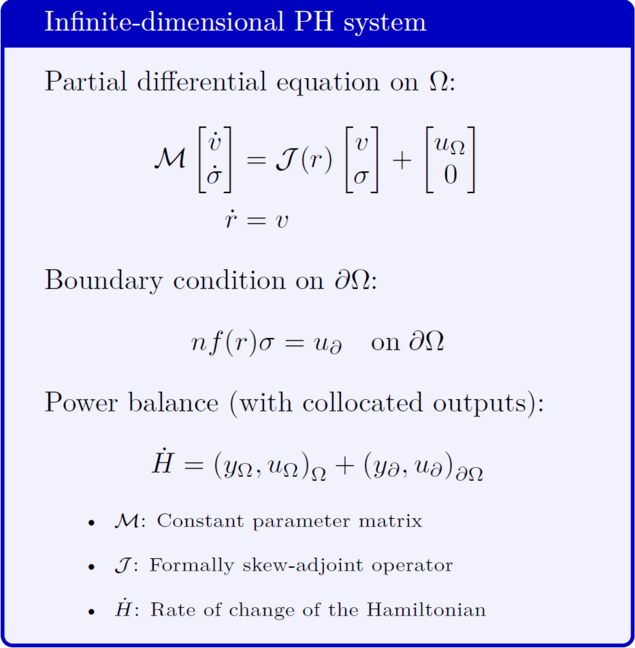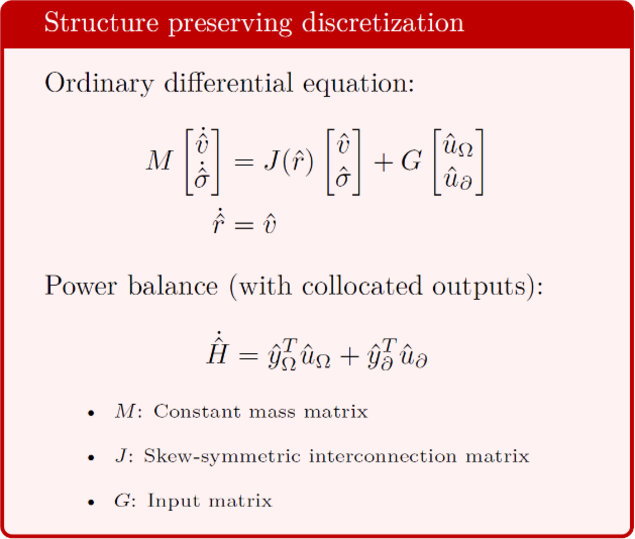Modeling and control of structural mechanics
Structural mechanical components (e.g., beams, strings, shells) are installed in countless technical systems such as robots, construction machines, satellite systems, and much more. As can be seen from the examples, the mechanical components are usually only a sub-module of large systems and are accordingly interconnected with their environment. This environmental coupling makes them an ideal choice for a port-Hamiltonian (PH) modeling.
PH systems provide a framework for modeling, system theoretic analysis and control of complex, multi-physical dynamical systems. Two main characteristics of the PH approach are the clear formulation of ports, i.e., pairs of power-conjugated variables that support the coupling of subsystems, and the energy-based perspective with its implications on stability analysis and feedback control design.
Since the dynamical behavior of flexible mechanical structures is usually described by partial differential equations of nonlinear continuum mechanics, the first part of this project focuses on the PH formulation and structure preserving discretization of geometrically nonlinear mechanical structures. Thus, we obtain finite-dimensional PH state space models which can be used for a subsequent controller design, simulation, or model order reduction.
The second part of this project focuses on the control of structural mechanics. Due to the spatial discretization, the resulting state space models might have a large order, what makes a feedback control design still challenging. Therefore, we want to design an appropriate feedforward controller to support a simple feedback controller.


